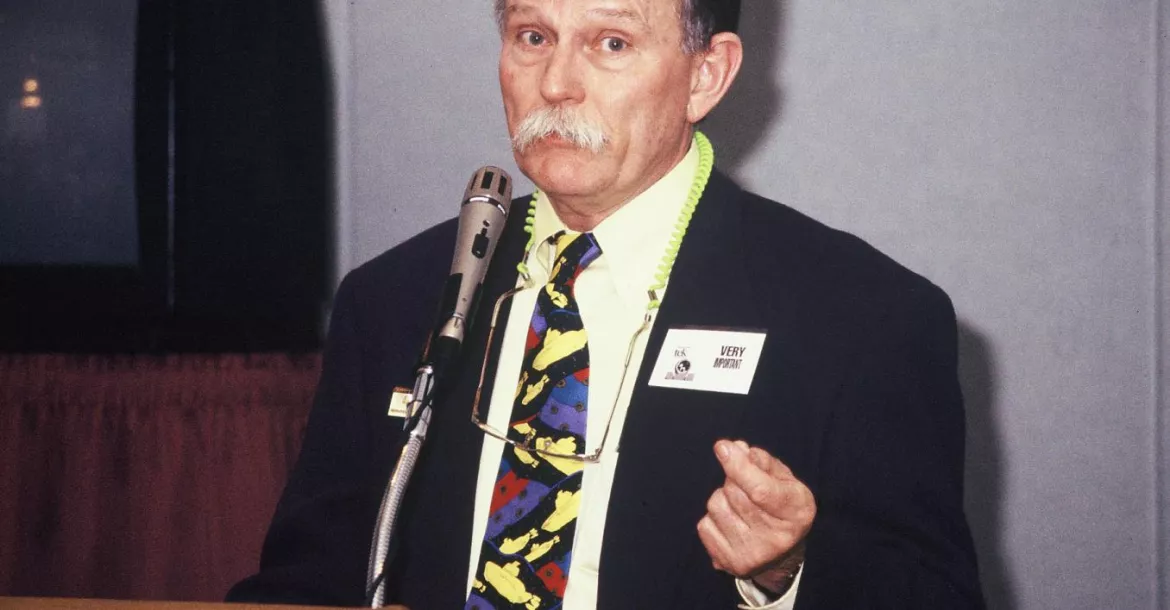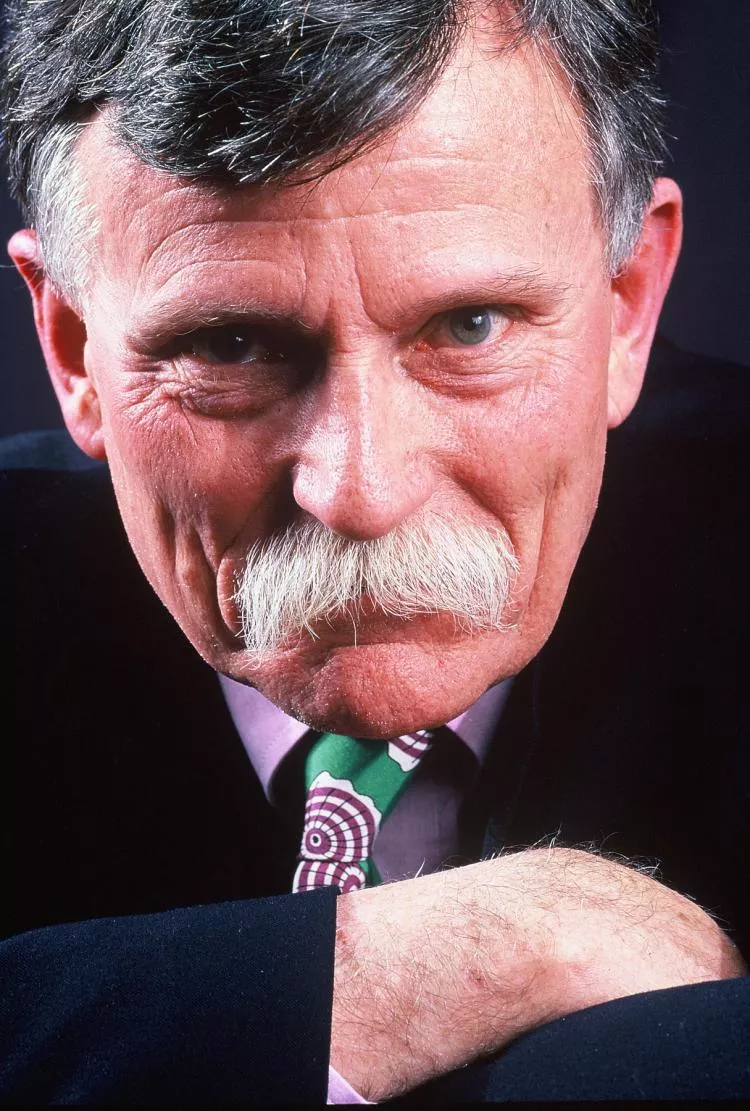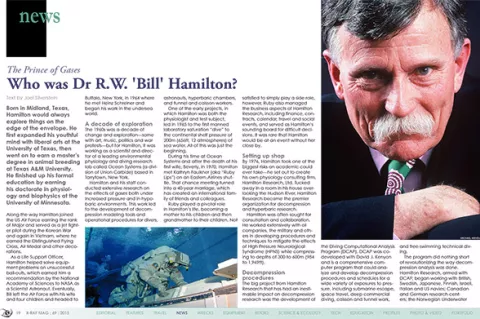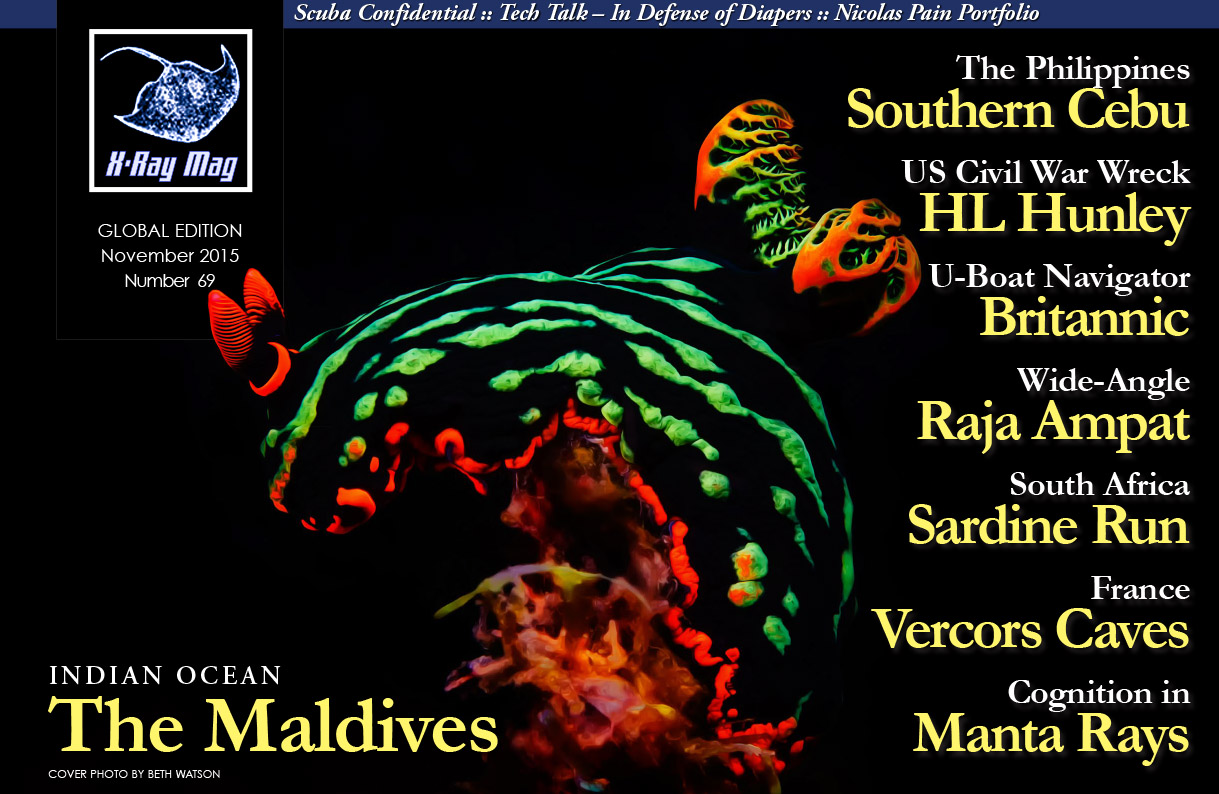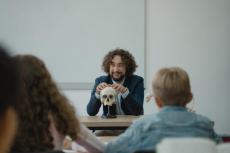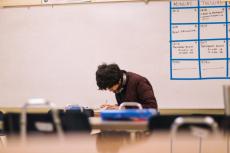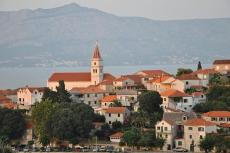Rarely in life do we encounter someone who was as impressive yet unassuming, humble, and gracious as R.W. “Bill” Hamilton, Ph.D. On September 16, 2011, Bill died surrounded by his family and close friends. Within hours, e-mail and telephones reached thousands of people and the news of his passing went viral. Nearly four hundred scurried to make plans for attending his memorial service. So what made this particular man so special?
Contributed by
Factfile
Joel Silverstein was co-author with Dr. Hamilton on a number of books, programs, chapters, and other projects, and was proud to call him a dear friend.
Contact: joel@joelsilverstein.com.
Dr. Hamilton’s resume and many papers can be found at http://rubicon-foundation.org/hamilton
Born in Midland, Texas, Bill would always explore things on the edge of the envelope. He first expanded his youthful mind with liberal arts at the University of Texas, then went on to earn a master’s degree in animal breeding at Texas A&M. He finished up his formal education by earning his doctorate degree in physiology and biophysics at the University of Minnesota.
Along the way Dr. Bill joined the U.S. Air Force earning the rank of Major and served as a jet fighter pilot during the Korean War and again in Vietnam, where he earned the Distinguished Flying Cross, Air Medal, and other decorations. As a Life Support Officer he helped solve equipment problems on unsuccessful bail outs which earned him a recommendation by the National Academy of Sciences to NASA as a Scientist Astronaut. Eventually, Bill left the Air Force with his wife and four children and headed to Buffalo, NY in 1964 where he met Heinz Schreiner and began his work in the undersea world.
Decade of exploration
The 1960s was a decade of change and exploration- some with art, music, politics and war protests- but for Dr. Bill, it was working as a scientist and director of a leading environmental physiology and diving research lab called Ocean Systems (a division of Union Carbide) based in Tarrytown, NY. Dr. Hamilton and his staff conducted extensive research on the effects of gases both under increased pressure and in hypobaric environments. This work led to the development of decompression modeling tools and operational procedures for divers, astronauts, hyperbaric chambers, and tunnel and caisson workers.
One of the early projects, in which Dr. Bill was both the physiologist and test subject, led in 1965 to the first manned laboratory saturation “dive” to the continental shelf pressure of 200 meters (656 feet, 12 atmospheres) of sea water. All of this was just the beginning.
During his time at Ocean Systems, and after the death of his first wife Beverly in 1970, Dr. Bill met Kathryn Faulkner (aka “Ruby Lips”) on an Eastern Airlines Shuttle. That chance meeting turned into a 40 year marriage that has created an international family of friends and colleagues. Ruby played a pivotal role in Dr. Bill’s life, becoming a mother to his children and then grandmother to their children.
Not satisfied to simply play a side role, however, Ruby also managed the business aspects of Hamilton Research, including finance, contracts, calendar, travel, and social events, and served as Bill’s sounding board for difficult decisions. It was rare Dr. Bill would be at an event without her close by.
Setting up own shop
By 1976, Dr. Hamilton took one of the biggest risks an academic could ever take - he set out to create his own physiology consulting firm, Hamilton Research, Ltd. Tucked away in a room in his house overlooking the Hudson River, Hamilton Research became the premier organization for decompression and hyperbaric research. Dr. Bill was often sought for consultation and collaboration. He worked extensively with oil companies, the military, and others in developing procedures and techniques to mitigate the effects of High Pressure Neurological Syndrome (HPNS) while compressing to depths of 300 to 600 meters (984 to 1969 feet).
Decompression procedures
The big project from Hamilton Research that has had an inestimable impact on decompression research was the development of the Diving Computational Analysis Program (DCAP). DCAP was co-developed with David J. Kenyon, and is a comprehensive computer program that could analyze and develop decompression procedures and schedules for a wide variety of exposures to pressure, including submarine escape, space travel, deep commercial diving, caisson and tunnel work, and free-swimming technical diving.
The program did nothing short of revolutionizing the way decompression analysis was done. Hamilton Research, armed with DCAP, began working with British, Swedish, Japanese, Finnish, Israeli, Italian and U.S. navies; Canadian and German research centers; the Norwegian Underwater Institute, and countless other organizations around the world.
In addition to DCAP, Dr. Bill also was the principal investigator and scientist in the creation of the NOAA Repex Oxygen Exposure tables- the basis for most every oxygen exposure calculation method used today for saturation and repetitive exposures to oxygen in breathing mixtures. His work continued to evolve and was consulted by attorneys and diving equipment companies on topics including dive computers, rebreathers, and expert witness testimony. He was even consulted by food companies on packaging foods in pressurized environments. His reach was endless.
Entry into sport diving
In the late 1980s, his love for the edge of the envelope came into view with extreme recreational divers. For decades, only commercial and military divers had access to mixed gases for diving operations. But now cave divers and wreck divers wanted to go deeper and farther than air would allow them to go safely. In an unprecedented move, Dr. Bill stepped out of his traditional role with commercial and military clients and stepped into the world of “sport divers.”
He created a custom set of decompression tables for extreme cave dives into the Wakulla system for dives to 100 meters (328 feet) on open circuit SCUBA with managed oxygen exposures and minimal nitrogen narcosis. The project was a success and now the “underground” was abuzz.
Under fire
While some of his colleagues criticized him for these efforts, Dr. Bill believed that if he did not help these divers they would do the dives anyway and possibly get hurt. His humanity was exemplified in his desire to help them and, as such, he opened up a whole new world of underwater exploration by the free-swimming un-tethered diver. This was the birth of “technical diving.” News of Dr. Hamilton’s tables got out and practicing deep divers from all over the world began contacting him for help.
Along came Capt. Billy Deans from Key West, who had been doing deep dives for years but wanted a better and safer way to do it. He and Dr. Bill became fast friends and Dr. Bill helped Billy to create the first training program for open ocean trimix diving. The friendship further led in part to the creation of the Key West Consortium—a group of divers who hired Hamilton Research, Ltd. to create a universal set of trimix decompression tables that would be used for open-ocean dives in the 180-250 fsw range.
Trimix and Tech
This opened up access to wrecks all over the world. The success of these tables with thousands upon thousands of dives led to Dr. Hamilton creating trimix tables for NOAA for use on the USS Monitor research projects. He was also a key contributor and advisor to “aquaCORPS Journal,” beginning with his seminal article, “Call It High-Tech Diving,” in the first issue in January, 1990, which sought to explain the technological changes taking place in sport diving. This second part of an already accomplished career was shining bright.
Dr. Bill was on everyone’s invite list for conferences and workshops all over the world. He was a principal contributor to the 1992 aquaCorps Nitrox Workshop in Houston that helped make nitrox diving mainstream in the recreational diving world. Dr. Bill then went on to write nitrox training manuals and programs for many of the certification agencies and was a major contributor to the original NOAA Diving Manual. He worked with many manufacturers on their dive computers and algorithms and was a regular consultant to the U.S. Navy on matters of decompression and decompression illness treatment.
Dr. Bill was generous with his time and advice, and he served by volunteering wherever he could. Often times, this meant anything from repairing lights in his church to sitting on boards for the Divers Alert Network (DAN), the Undersea and Hyperbaric Medical Society (UHMS), the National Oceanic and Atmospheric Administration (NOAA), and the National Fire Protection Association (NFPA). Dr. Bill volunteered to lead conferences as a keynote speaker as well as serving in the Air National Guard. He was never more than a phone call or e-mail away to help those who needed it. That was his nature.
Over 100 honors
Over the years Dr. Bill was recipient of more than a hundred honors and awards from most every diving and science organization. From keynote speaker to Diver of the Year someplace in the world, he and Ruby Lips would often be featured at the party. And then, Dr. Bill would slip off for a little nap, then find a laptop or cocktail napkin, and have serious discussions with serious people about things that mattered, like life support. Dr. Hamilton’s accomplishments in life go deeper than the bottom of the sea and higher than Mount Everest. They delve into the hearts and minds of friends, family, and colleagues. He instilled the desire to be better at what we do into each and every one of us.
His contributions to the world of diving are unmatched, and his forward thinking of how divers would survive underwater is arguably the basis for all extreme exposure diving today. His modus operandi was to get the job done right and then have a good time with the people around him. Everybody he met, if only for a moment, was a better person for it. Dr. Bill’s ability to examine and explore ways to make something or someone better was his way. A little nap along the way and he was recharged and ready to take on the next task.
Dr. Bill Hamilton was predeceased by his wife Beverly, son Beto, and daughter Kitty. He is survived by his wife of nearly 40 years, Kathryn “Ruby Lips”; daughters Lucy and Sally; sisters Emily and Ann; grandsons, Felix, Bobby, Zach, Tyler, and Truman; and an untold number of adoring and loving fans. He is already missed.

